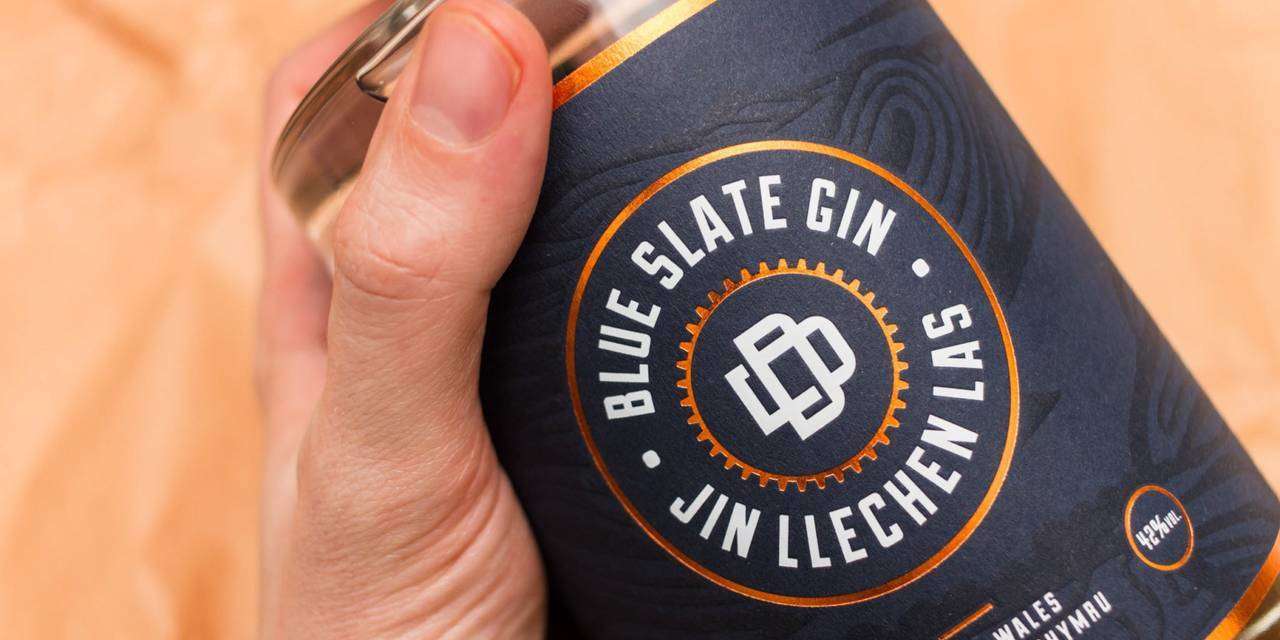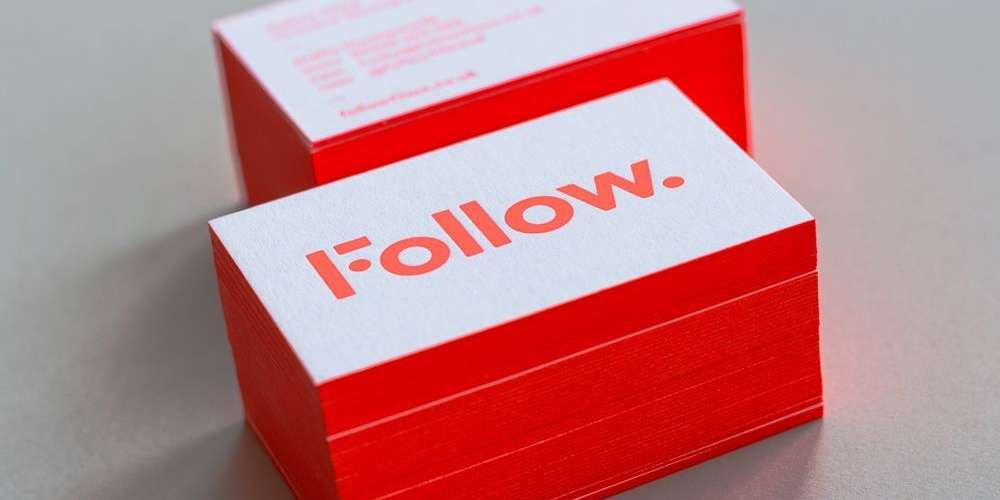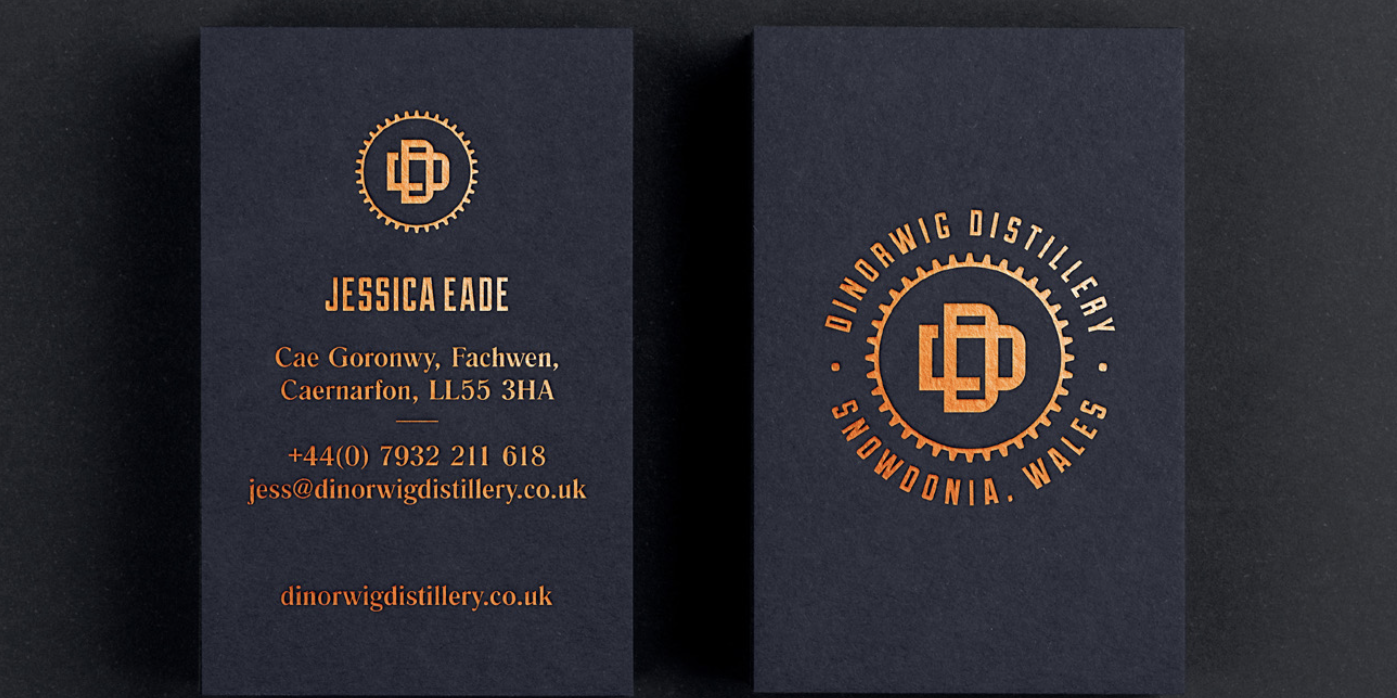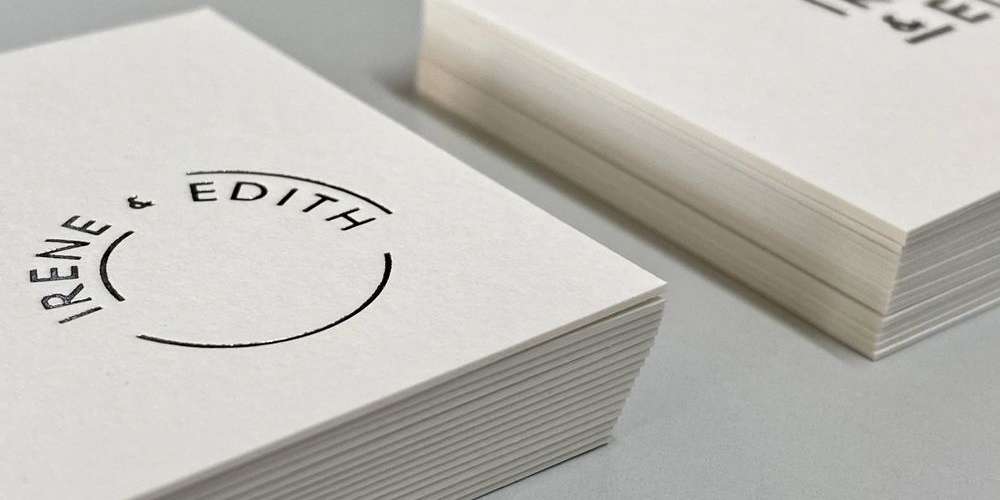With the ever-increasing demand for short run (cheap) business cards where 300gsm matt laminated cards has become the norm, but if they fail to impress is it money well spent? The alternative is something special, something considered, something tactile, a quality piece of print that becomes the talking point, instead of an apology.
Letterpress printing is an old craft skill technique, which dates back to the mid-15th century, a process of relief printing (emboss or deboss) using metal or wooden type. Typically you can print on specialist papers using duplex boards (2 sheets of paper gummed together) taking the weight up to 720gsm.
Other advantages of letterpress printing is that there is also an army of different finishing techniques that make all the difference, make an ordinary piece of print something special.
Blind emboss
Method of creating raised logos or character on paper without ink. In this process two metal die cuts are used; one with raised logo or character and another with matching but recessed area. When a sheet of paper is pressed between these two dies, blind embossing occurs.
Die Cutting
Die Cutting is the most conventional method of shape cutting. Instead of printing, the sheet is die cut using a flat bed tool formed to the desired shape. Internal as well as external shapes are possible. Die cutting shape are also used on packaging to cut out the final shapes
Duplex
A duplex is the pasting together of two sheets of paper, making one thicker sheet in the end. An example – two 250gsm sheets pasting together to provide a 500gsm final thickness. the other advantages of using duplex is that you can have different coloured stock, so one side can be white the other a coloured board. Increasing the thickness adds a quality and make it more tactile.



